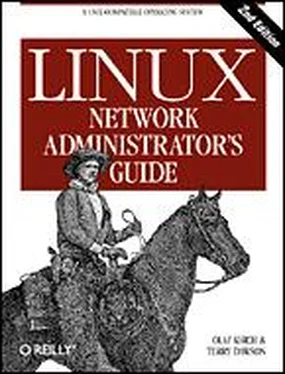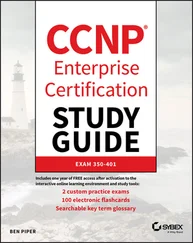Olaf Kirch & Terry Dawson
Linux Network Administrator's Guide, 2nd Edition
The Internet is now a household term in many countries. With otherwise serious people beginning to joyride along the Information Superhighway, computer networking seems to be moving toward the status of TV sets and microwave ovens. The Internet has unusually high media coverage, and social science majors are descending on Usenet newsgroups, online virtual reality environments, and the Web to conduct research on the new "Internet Culture."
Of course, networking has been around for a long time. Connecting computers to form local area networks has been common practice, even at small installations, and so have long-haul links using transmission lines provided by telecommunications companies. A rapidly growing conglomerate of world-wide networks has, however, made joining the global village a perfectly reasonable option for even small non-profit organizations of private computer users. Setting up an Internet host with mail and news capabilities offering dialup and ISDN access has become affordable, and the advent of DSL (Digital Subscriber Line) and Cable Modem technologies will doubtlessly continue this trend.
Talking about computer networks often means talking about Unix. Of course, Unix is not the only operating system with network capabilities, nor will it remain a frontrunner forever, but it has been in the networking business for a long time, and will surely continue to be for some time to come.
What makes Unix particularly interesting to private users is that there has been much activity to bring free Unix-like operating systems to the PC, such as 386BSD, FreeBSD, and Linux.
Linux is a freely distributable Unix clone for personal computers. It currently runs on a variety of machines that includes the Intel family of processors, but also Motorola 680x0 machines, such as the Commodore Amiga and Apple Macintosh; Sun SPARC and Ultra-SPARC machines; Compaq Alphas; MIPS; PowerPCs, such as the new generation of Apple Macintosh; and StrongARM, like the rebel.com Netwinder and 3Com Palm machines. Linux has been ported to some relatively obscure platforms, like the Fujitsu AP-1000 and the IBM System 3/90. Ports to other interesting architectures are currently in progress in developers' labs, and the quest to move Linux into the embedded controller space promises success.
Linux was developed by a large team of volunteers across the Internet. The project was started in 1990 by Linus Torvalds, a Finnish college student, as an operating systems course project. Since that time, Linux has snowballed into a full-featured Unix clone capable of running applications as diverse as simulation and modeling programs, word processors, speech recognition systems, World Wide Web browsers, and a horde of other software, including a variety of excellent games. A great deal of hardware is supported, and Linux contains a complete implementation of TCP/IP networking, including SLIP, PPP, firewalls, a full IPX implementation, and many features and some protocols not found in any other operating system. Linux is powerful, fast, and free, and its popularity in the world beyond the Internet is growing rapidly.
The Linux operating system itself is covered by the GNU General Public License, the same copyright license used by software developed by the Free Software Foundation. This license allows anyone to redistribute or modify the software (free of charge or for a profit) as long as all modifications and distributions are freely distributable as well. The term "free software" refers to freedom of application, not freedom of cost.
Purpose and Audience for This Book
This book was written to provide a single reference for network administration in a Linux environment. Beginners and experienced users alike should find the information they need to cover nearly all important administration activities required to manage a Linux network configuration. The possible range of topics to cover is nearly limitless, so of course it has been impossible to include everything there is to say on all subjects. We've tried to cover the most important and common ones. We've found that beginners to Linux networking, even those with no prior exposure to Unix-like operating systems, have found this book good enough to help them successfully get their Linux network configurations up and running and get them ready to learn more.
There are many books and other sources of information from which you can learn any of the topics covered in this book (with the possible exception of some of the truly Linux-specific features, such as the new Linux firewall interface, which is not well documented elsewhere) in greater depth. We've provided a bibliography for you to use when you are ready to explore more.
If you are new to the world of Linux, there are a number of resources to explore and become familiar with. Having access to the Internet is helpful, but not essential.
Linux Documentation Project guides
The Linux Documentation Project is a group of volunteers who have worked to produce books (guides), HOWTO documents, and manual pages on topics ranging from installation to kernel programming. The LDP works include:
Linux Installation and Getting Started
By Matt Welsh, et al. This book describes how to obtain, install, and use Linux. It includes an introductory Unix tutorial and information on systems administration, the X Window System, and networking.
Linux System Administrators Guide
By Lars Wirzenius and Joanna Oja. This book is a guide to general Linux system administration and covers topics such as creating and configuring users, performing system backups, configuration of major software packages, and installing and upgrading software.
Linux System Adminstration Made Easy
By Steve Frampton. This book describes day-to-day administration and maintenance issues of relevance to Linux users.
Linux Programmers Guide
By B. Scott Burkett, Sven Goldt, John D. Harper, Sven van der Meer, and Matt Welsh. This book covers topics of interest to people who wish to develop application software for Linux.
The Linux Kernel
By David A. Rusling. This book provides an introduction to the Linux Kernel, how it is constructed, and how it works. Take a tour of your kernel.
The Linux Kernel Module Programming Guide
By Ori Pomerantz. This guide explains how to write Linux kernel modules.
More manuals are in development. For more information about the LDP you should consult their World Wide Web server at http://www.linuxdoc.org/ or one of its many mirrors.
HOWTO documents
The Linux HOWTOs are a comprehensive series of papers detailing various aspects of the system - such as installation and configuration of the X Window System software, or how to write in assembly language programming under Linux. These are generally located in the HOWTO subdirectory of the FTP sites listed later, or they are available on the World Wide Web at one of the many Linux Documentation Project mirror sites. See the Bibliography at the end of this book, or the file HOWTO-INDEX for a list of what's available.
You might want to obtain the Installation HOWTO , which describes how to install Linux on your system; the Hardware Compatibility HOWTO , which contains a list of hardware known to work with Linux; and the Distribution HOWTO , which lists software vendors selling Linux on diskette and CD-ROM.
The bibliography of this book includes references to the HOWTO documents that are related to Linux networking.
Linux Frequently Asked Questions
The Linux Frequently Asked Questions with Answers (FAQ) contains a wide assortment of questions and answers about the system. It is a must-read for all newcomers.
Читать дальше



![Andrew Radford - Linguistics An Introduction [Second Edition]](/books/397851/andrew-radford-linguistics-an-introduction-second-thumb.webp)








